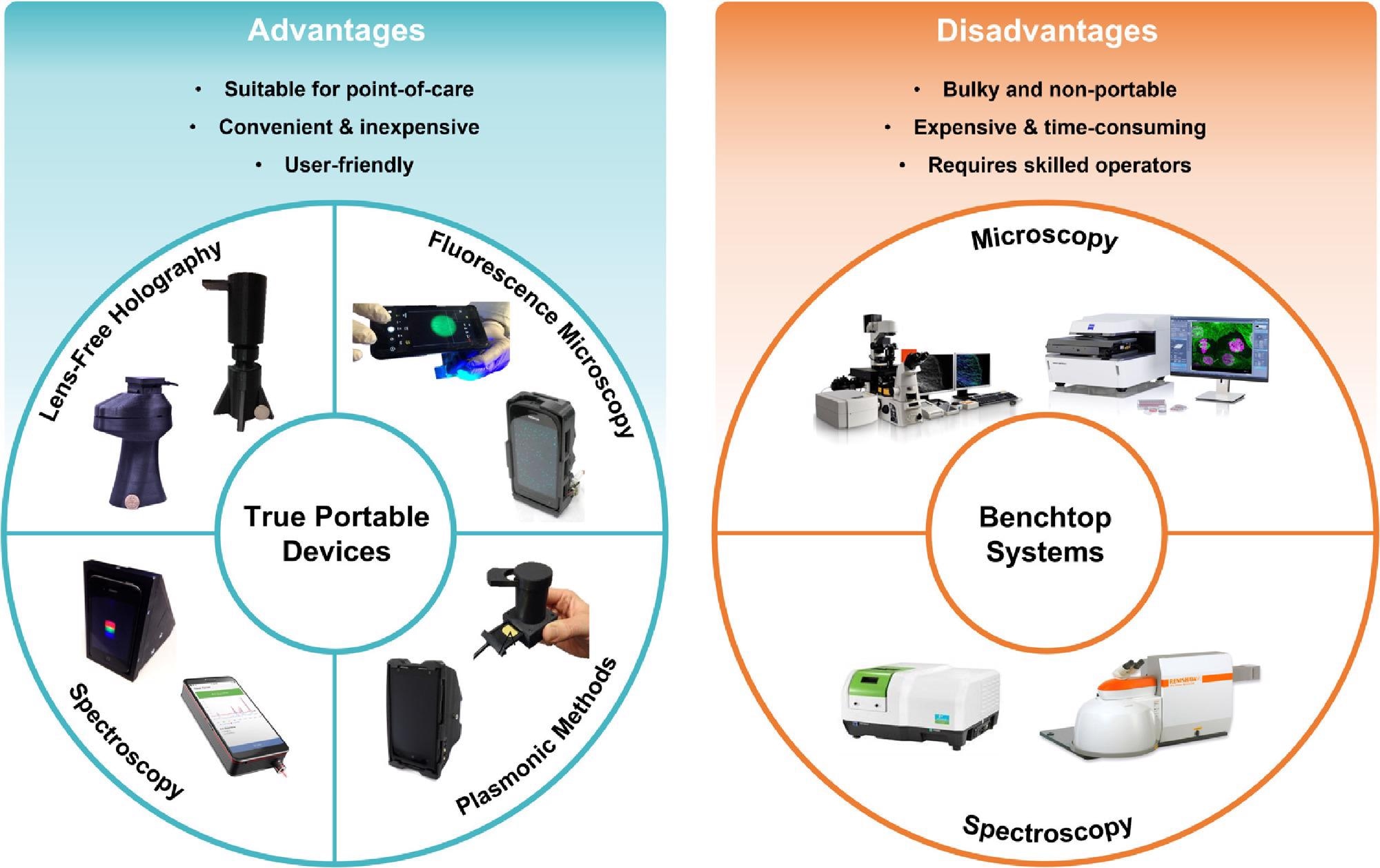A new breakthrough of mobile imaging technologies for single-molecule and particles detection has now been created, as stated in Sensors and Actuators Reports, considerably improving the accuracy of molecular assay identification.

Study: Single-molecule and particle detection on true portable microscopy platforms. Image Credit: Catalin Rusnac/Shutterstock.com
For the future of diagnosis and customized medicine, point-of-care technologies (POCT) that provide early illness identification and therapy monitoring are critical. However, there is a worldwide need for low-cost POCT that allows advanced diagnostic techniques in resource-constrained situations.
Mobile imaging technologies for diagnosis involve the development of methods for single-molecule and particles optical detection on portable systems, such as miniature imaging technologies with high sensitivity. These could be based on cellphones, single-board computers (such as Raspberry Pi technologies), lchip systems, and 3D-printing microscopy technologies.

Comparison of benchtop and portable techniques for single-molecule and particle detection. Image Credit: Skolrood, L., et al.
Technology on Early Diagnosis
For decades, precision healthcare approaches have been in the public eye, with innovative and sophisticated diagnoses in laboratory settings complementing at-home healthcare monitoring tactics.
Single-molecule observations provide the highest observable sensitivity and have long been an aim of analytical methodologies.
With the advancement of technologies like spectroscopy and microscopy with relatively high sensitivities, electro-optic tools now can identify individual biological molecules. This includes proteins and nucleic acids at a single-molecule level, driving ultrasensitive diagnostic procedures and offering a crucial understanding of complex cellular mechanisms.
In recent years, single-molecule identification has been increasingly significant in biological science. Examples include viral particle identification, protein interactions, and DNA sequencing.
Many portable devices for high-sensitivity imagery research, including equipment for imaging specific fluorophores, peptides, viruses, and nanoparticles, have been created. For single-molecule identification, most approaches employ fluorescence alongside labels or tags. However, it is useful in resource-constrained contexts if complicated biological samples can be examined without costly pre-processing steps.
SERS with Plasmonic Substances
Surface-enhanced Raman spectroscopy (SERS) uses plasmonic substances to boost Raman signals and allow identification down to the single-molecule level, complementing plasmonic approaches for improved fluorescence detection.
SERS substrates are made up of plasmonic nanoparticles, often silver or gold nanoparticles.
In non-portable devices confined to laboratory conditions, a smartphone-based Raman spectrometer demonstrating single-molecule identification has been achieved.
Microscopic Fluorescence Microscopy
Small molecules, such as proteins or nanoparticles, are difficult to view under microscopic fluorescence microscopy due to the relatively low emission intensity, necessitating super-resolution or signal augmentation for sensitive and precise quantifications.
Particular molecules are identified as they diffuse in and out of the focal volume inside a defined experimental volume, allowing the photon counter to derive photon counts per particle and the average number of molecules inside the observation quantity.
Plasmonic Identification using SPR Approach
Surface plasmon resonance (SPR) is also another diagnostic technique that has been widely used to detect single molecules or nanomaterials. Plasmonic resonance is an interesting optical feature of metallic nanostructures that occurs when the dimensions are less than or equal to the wavelengths of the incident beam.
SPR-based approaches can be employed for sensitive detection of analytes like protein immunoassays and nucleic acid biomarkers due to their tunability and large electromagnetic (EM) enhancing impact, thus having transformative power in POC biosensing.
A new portable plasmonic bioassay for high-throughput testing of biomolecular binding events has been developed by combining plasmonic Au nanohole panels with a lens-free on-chip camera system. This mobile biosensor can detect protein monolayers as thin as 3 nm without needing tags. It also allows for quantitative investigation of receptor binding events across a wide range of biomolecule concentrations.
Advantage of SPR Platforms in Biomedicine
SPR platforms coupled with microfluidic chips have been constructed with the advantages of low-cost manufacture, versatility, and quick findings that can be used in biomedical applications.
Other plasmonic approaches on tiny devices show promise for future advances in optical single-molecule and nanoparticle detection. Recent advances in POCT look promising in bringing precision healthcare technologies to resource-constrained areas.
Single-molecule biosensors can be used to identify disease biomarkers from complicated clinical samples, enhancing patient outcomes by allowing for early illness diagnosis and therapy monitoring.
New Sensing Device in Further Research
Nonetheless, by using new signal amplification and detection methodologies, there is a great possibility to further increase the sensitivity and resolution of POCT approaches and reach a broader range of sensing objectives.
Future research could, for example, create tiny or portable devices for super-resolution fluorescence microscopy, which would transcend the theoretical diffraction limit for optoelectronic devices.
Furthermore, new sensing devices that combine fluorescence microscopy with spectroscopic and plasmonic amplification approaches have lately piqued the interest of researchers since they can improve sensitivity while also providing chemical detection and multiplex sensing capabilities.
Continue reading: The Benefits of AFM for Nanoparticle Research.
Reference
Skolrood, L., et al. (2021) Single-molecule and particle detection on true portable microscopy platforms. Available online 5 December 2021. Available at: https://www.sciencedirect.com/science/article/pii/S2666053921000382
Disclaimer: The views expressed here are those of the author expressed in their private capacity and do not necessarily represent the views of AZoM.com Limited T/A AZoNetwork the owner and operator of this website. This disclaimer forms part of the Terms and conditions of use of this website.